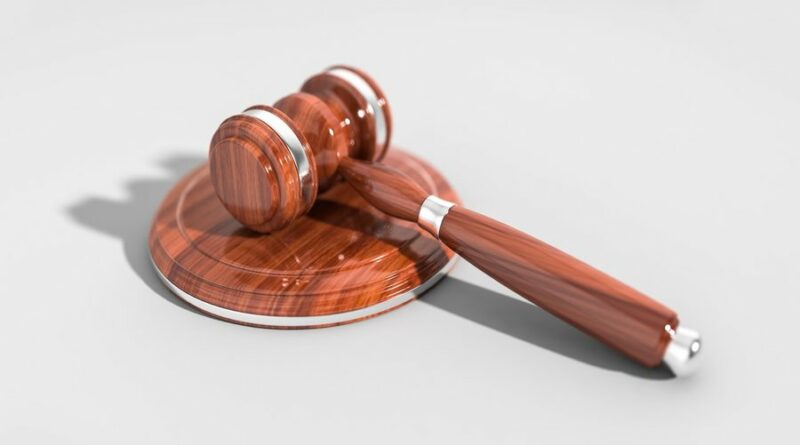Tort Law is the Body of Law Governing Negligence
Negligence is one of the major fields of tort litigation in the current law systems. The main issue in negligence entails the actions of the defendant that portrays unsustainable quality of care than what is an essential. By definition, negligence is an act that fails to apply law obligation that requires one to offer protection to others against unreasonable risks or harm. Tort law can be understood as a civil wrong deed that emanates from infringement of legal rights (Jennings 2012). This issue ranges from the omission or an act where the person in question does not meet what is expected from him. In other words, a tort can be clearly understood as a wrongful omission or act that arises from a contract that violates the legal rights of a person in which the bylaw offers a legal rule depending on the damages.
The main function of the tort law is to provide compensation which is called a remedy to a plaintiff who suffers damages, harm, and loss. The harm can also include physical injuries. However, suffering alone does account for the court to rule against a case. This is because to rule in the form of a loss does not guarantee that the remedy will be provided by law. A plaintiff must produce substantial evidence that the person who committed a tortious act was responsible to take care of the plaintiff (Steele 2007). Furthermore, the complainant proves that the act has undoubtedly caused loss.
The law of torts takes into consideration various civil wrongs like trespass, negligence, defamation and nuisance. Torts have different rules that apply to a liability but most of them necessitate imposing liability to a person who is responsible for harm either intentionally or negligently. Strict liability torts impose liability to people when they are not faulty. In some cases, a tort can be imposed to a person for the mistake committed by another individual (John 2000).
This kind of liability is identified as vicarious liability, and it is mostly applied to businesses because employers tend to be vicariously irresponsible for torts against their workers.
Negligence is a fundamental tort that takes into account many issues that involve individual negligence that renders harm to others. For a plaintiff to succeed in the negligence case, he/she should establish three key elements. These key areas of concern include; the defendant is responsible for the duty of care of a claimant, the defendant violated the duty of care and breach of duty caused foreseeable damage. The laws of torts have evolved and developed decisions of judges in law cases. In the recent years, new duties of the regulation have been created by law. The human right act 1998 that was enacted requires judges to come up with a common law to interpret it so that it is agrees with the convention (Jennings 2012).
Tort law is relevant and gives Gary the rights to recover from the damages caused by the solicitor. Gary enters into a partnership investment with Simons. However, the investment has several risks that place Garry under a tight situation on how the future risk can impact on his contributions. A solicitor who is mandated to draw a partnership deed commits an error on the agreed figure of money that is reached upon. This mistake creates dishonesty among the two investment partners about the financial liability (Lewthwaite 2007).
The solicitor exposes Gary to a lot of losses and also puts him at a risk of being sued by debtors. This case that involves Garry and Simon together with the solicitors is a superb example of tort of negligence case. Gary is right to demand remedy because all victims of tortuous are entitled to compensation from damages (Steele 2007). Gary should go a head to sue the solicitor what is termed as negligence. The laxity is responsible for the loss of a large sum money and risk of being sued by creditors. It is the error that the solicitor caused by avoiding being extra careful that made Garry to be exposed to such circumstances. To be eligible for the tort of negligence law, Gary experienced a foreseeable loss of an extra £50000 a part from the from initial £50000 agreement.
It is beyond reasonable doubt that the solicitor went against his responsibility by quoting the wrong figure and yet he had a duty to care for the plaintiff. The defendant owed Garry the duty of care which ensured that the partnership deed was supposed to be free from any error or mistakes. Careless activity could cause a lot of loss and friction with creditors. The defendant was also supposed to ensure that there was clarity and figures agree with the accord of the two business partners ensuring there are no other external forces that could affect the business (Jennings 2012). Additionally, the solicitor violated his duty as a solicitor to be careless while dealing with a remarkably sensible matter. The law of tort is relevant to Gary in that there complainant believes that he has a right to sue the solicitor for causing a damage.
However, there is a form of defense which is possible to the solicitor. The decision by the court states that the solicitor should not be liable for the damage. This can be explained that the solicitor did not have any duty to the take care of the plaintiff’s risks that could arise from the joined investments. Simon who was involved in a business deal with Garry is responsible for the mistake because he his directly connected to Garry. The solicitor who is the defendant does not fall part of the partnership at all cost; the role of the defendant was only to draw a partnership deed under the instruction of someone else (George 2003). The main duty of the solicitor was to help his client draw a partnership deed and not to be part of a partnership between Simon and Garry. The defendant had a very strong reason to disapprove the court that he contributed to the negligence.
Bibliography
A brief over view of tort laws 2001, viewed 13th July 2012, http://tort.laws.com/tort-law
George, L G 2003, a Critical History of the Intellectual Foundations of Modern Tort Law, Journal of Legal Studies, Vol. 6, no. 5, pp. 321-56.
Jennings, M 2012, Business: its legal, ethical, and global environment. Mason, OH, South-Western Cengage Learning.
Jentz, G A 2013, Fundamentals of business law: summarized cases. Mason, Ohio, South-Western Cengage Learning.
John, F T 2000, the Role of Negligence in Modern Tort Law, Virginia Law Review, Vol. 4, no. 7, pp 815-23.
Lewthwaite, J P 2007, Tort law textbook. Oxford, Oxford University Press.
Steele, J 2007, Tort law: text, cases, and materials. Oxford, Oxford University Press.




